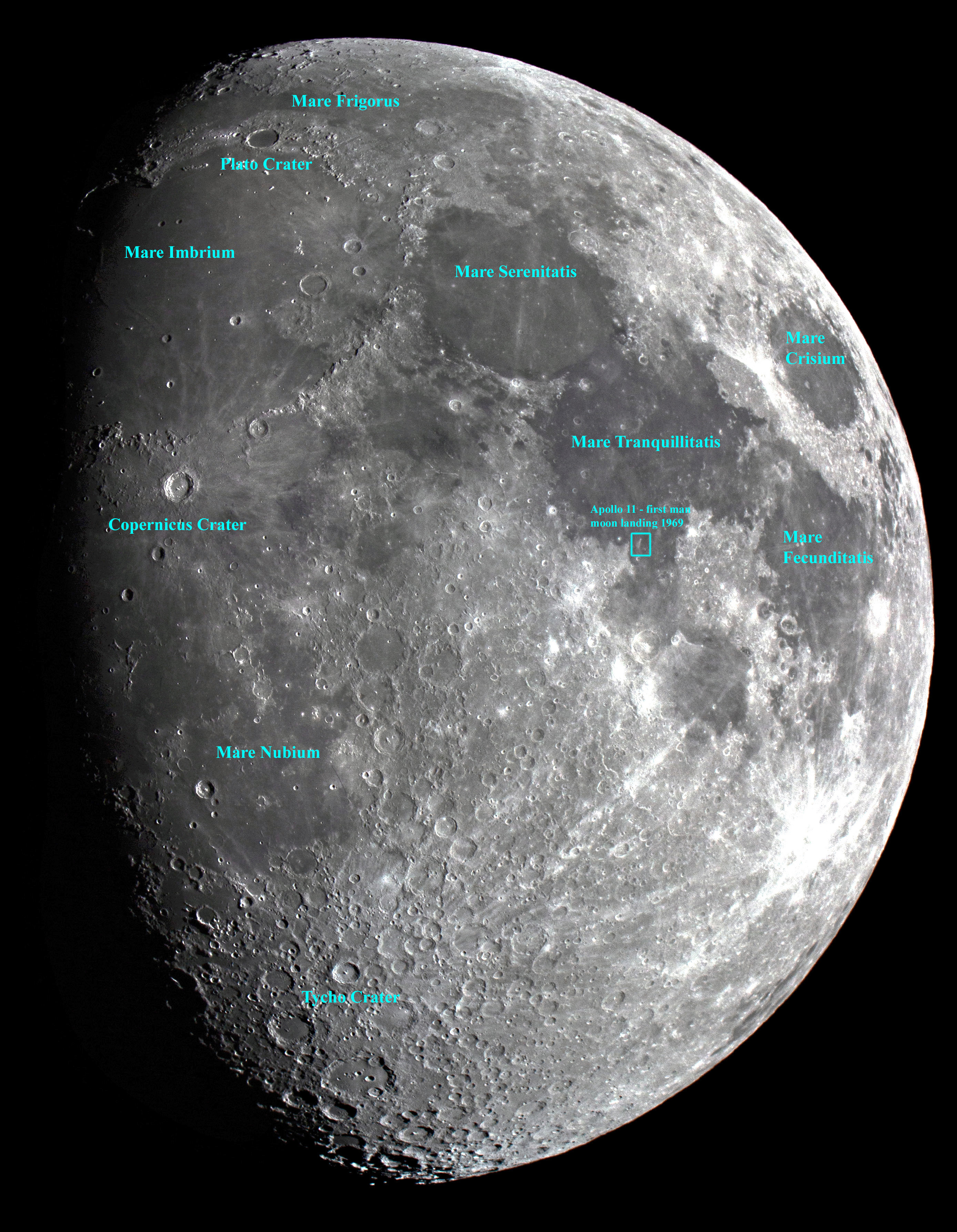|
Michael A. Stecker Home Astronomy Index Page Solar System Robert Reeves -- the Moon Celestron 9.25-inch EdgeHD SCT
|
|
Moon on the evening of
March 12, 2022. |
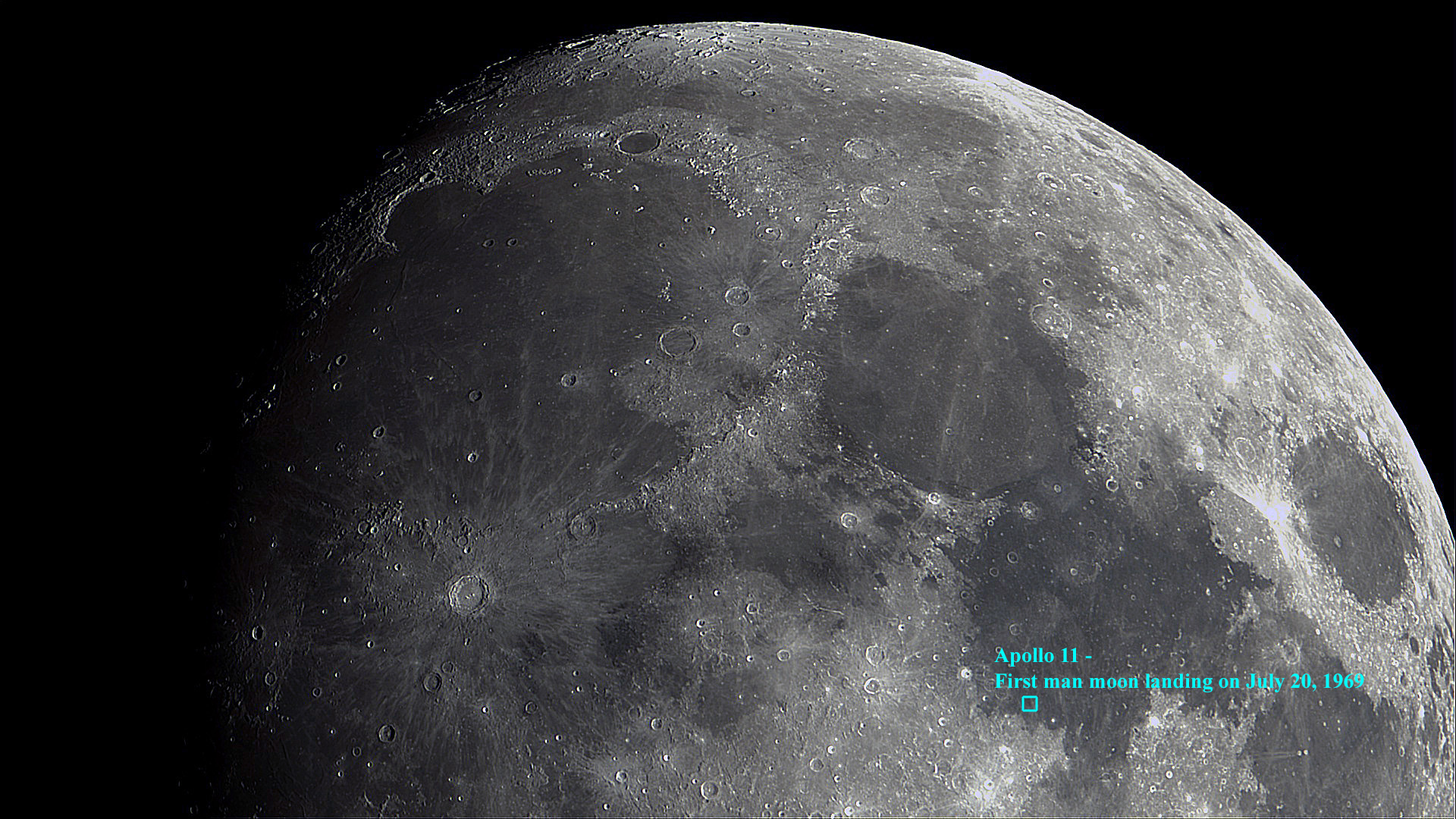 Northern hemisphere of near side of our moon showing "corrected" Apollo 11 landing site on July 20, 1969 https://www.youtube.com/watch?v=klyjqiLWpXE Photographic Data .Telescope: Astro-Physics 130 mm f/6 EDF Starfire triplet refractor with field flattener (focal length= 877 mm) . Camera ZWO ASI533MC-Pro cooled color astro-camera used in video mode .. Exposure one minute video with frames stacked . Mount iOptron GEM45 . Site West Los Angeles backyard |
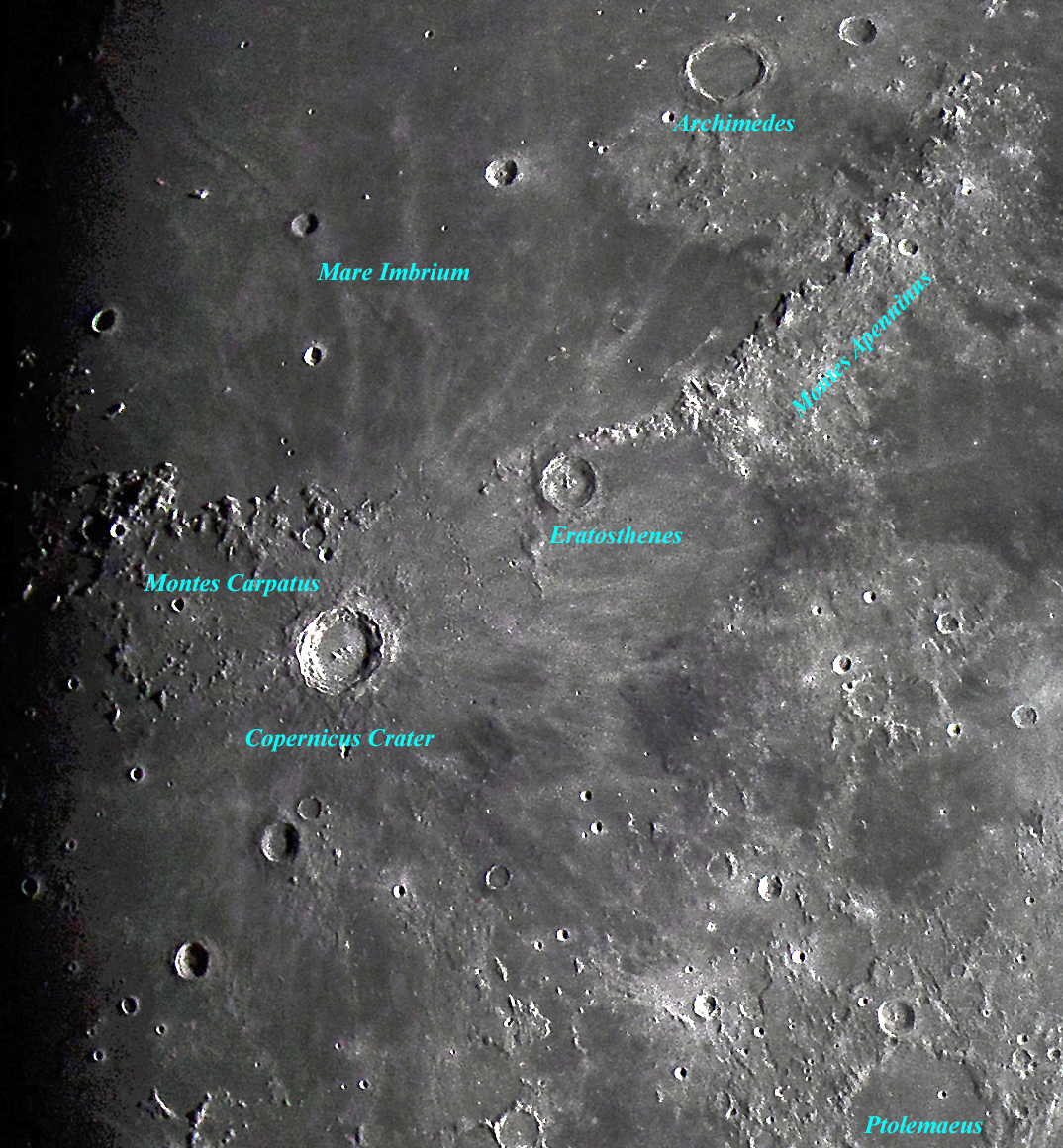 Above photo cropped and labeled . |
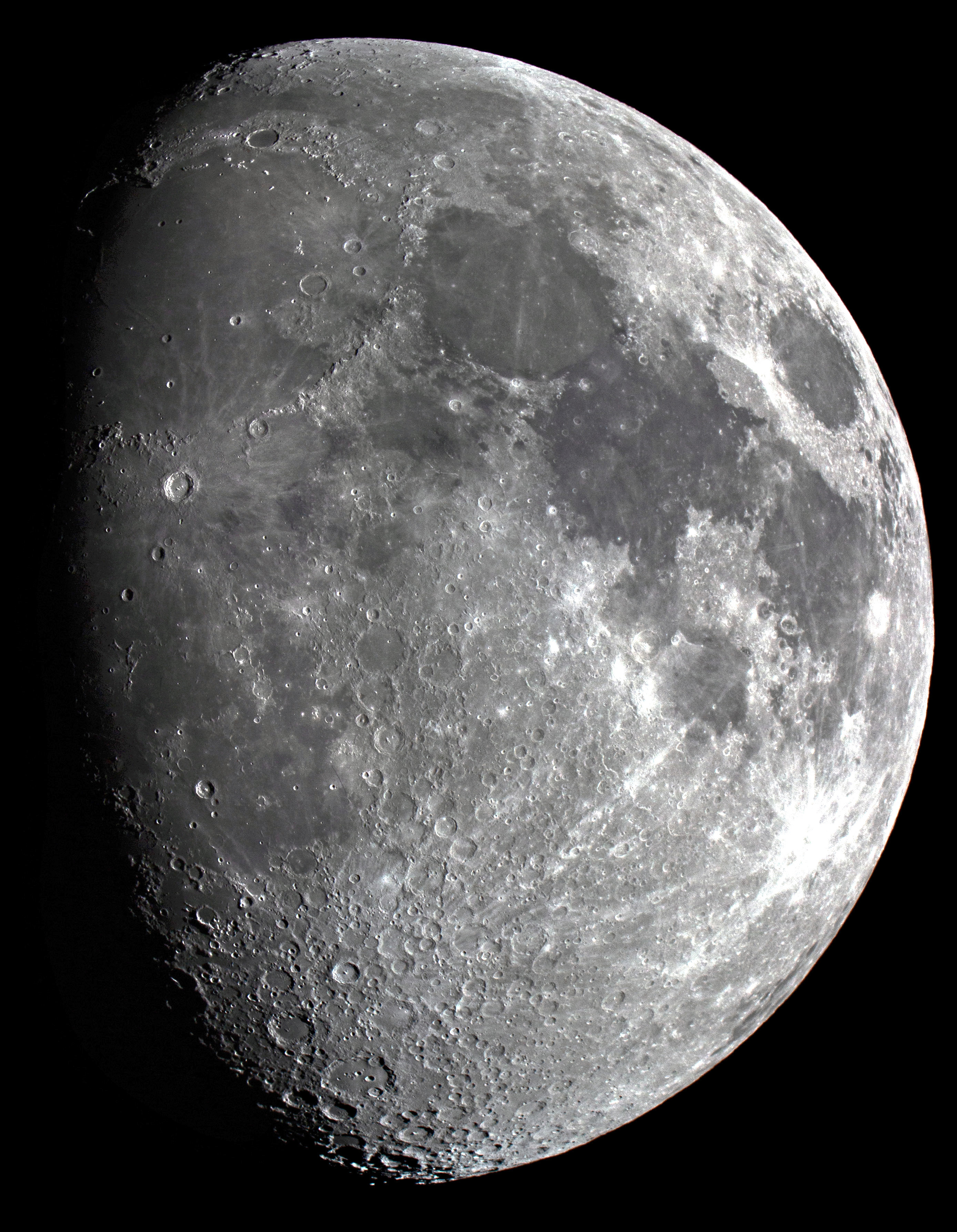 Moon on the evening of March 12, 2022. A 69% illuminated waxing gibbous moon. Photo taken from my front porch in Los Angeles. North is up. click on photo to see enlargement Photographic Data Telescope: Celestron EdgeHD 9.25-inch f/10 SCT with Celestron 0.7X focal reducer aperture: 9.25 inches (234 mm), focal length: 1644 mm, focal ratio: f/7 Mount: iOptron GEM45 Camera: Canon SL1 DSLR at ISO 200, 1/200 second single exposure at f/7 . |
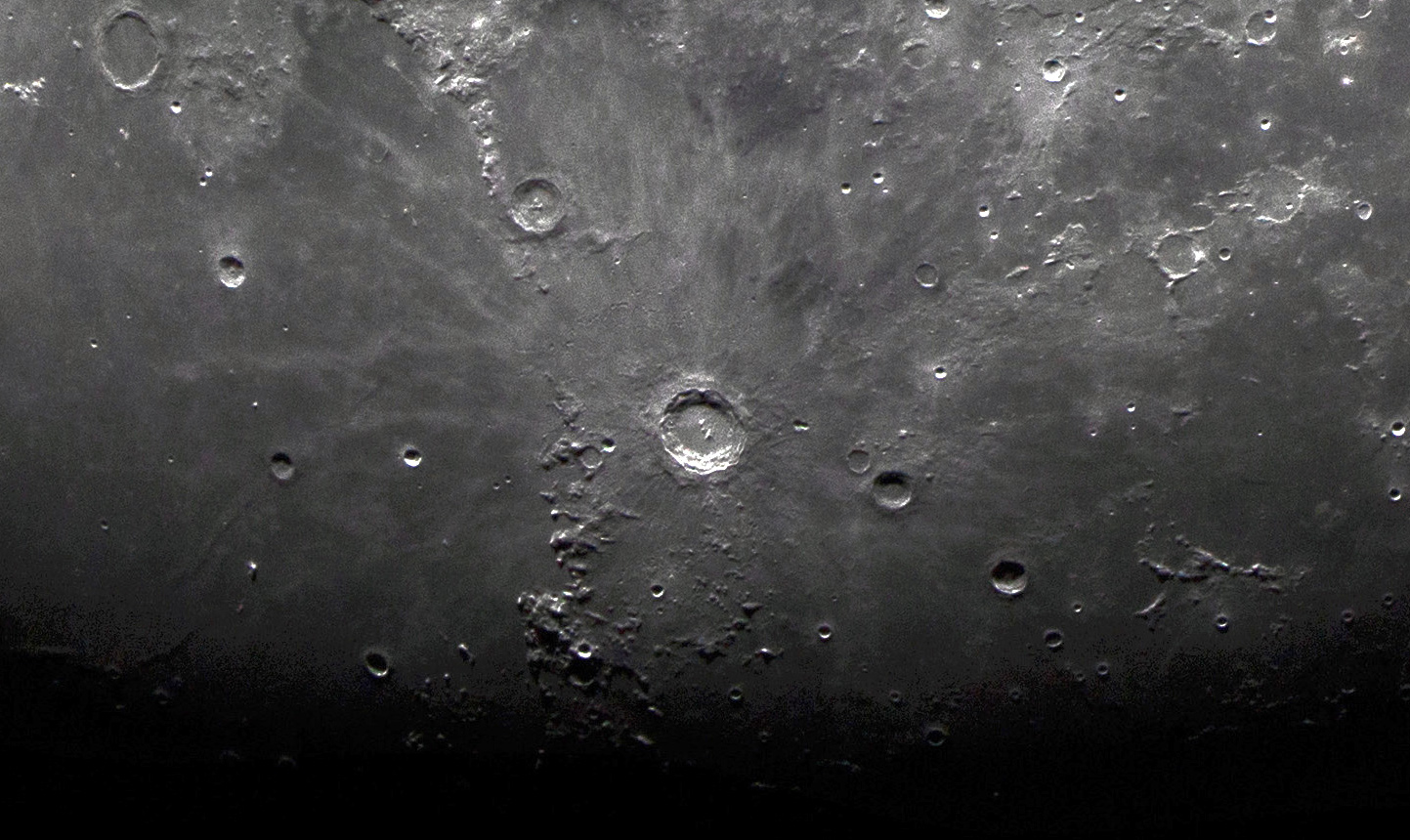 Image cropped from gibbous moon photo above to show Copernicus Crater date: March 12, 2022 click twice on photo to see enlargement . About Copernicus Crater Located at 10-degrees North, 20-degrees West near the southern rim of Mare Imbrium, Copernicus is a relatively young, well-preserved rayed lunar crater measuring 92 km (58 miles) in diameter. Peaked mountains rise from the center to a height of 800 meters (2,600 feet). It was named after Polish astronomer Nicolaus Copernicus (1473-1543). Photographic Data Telescope: Celestron EdgeHD 9.25-inch f/10 SCT with Celestron 0.7X focal reducer aperture: 9.25 inches (234 mm), focal length: 1644 mm, focal ratio: f/7 Mount: iOptron GEM45 Camera: Canon SL1 DSLR at ISO 200, 1/200 second single exposure at f/7 . |
